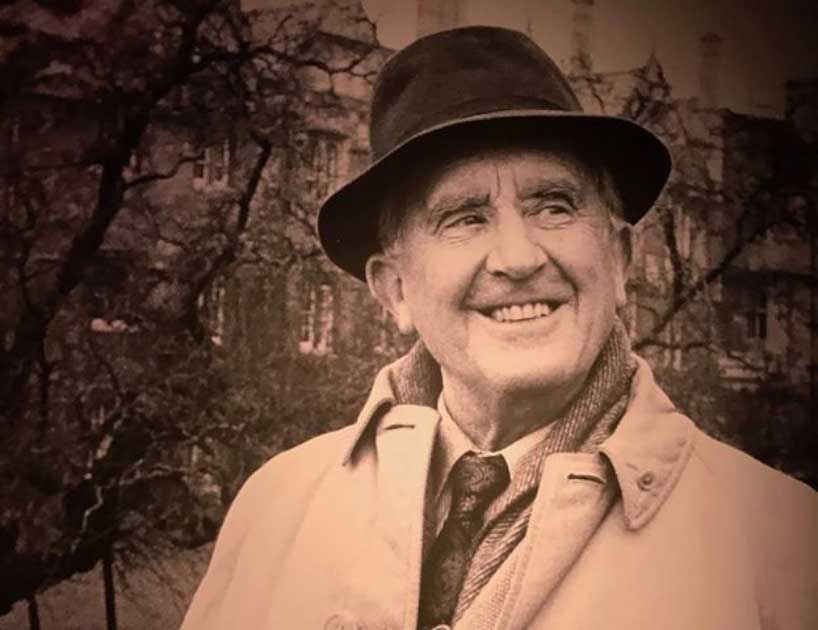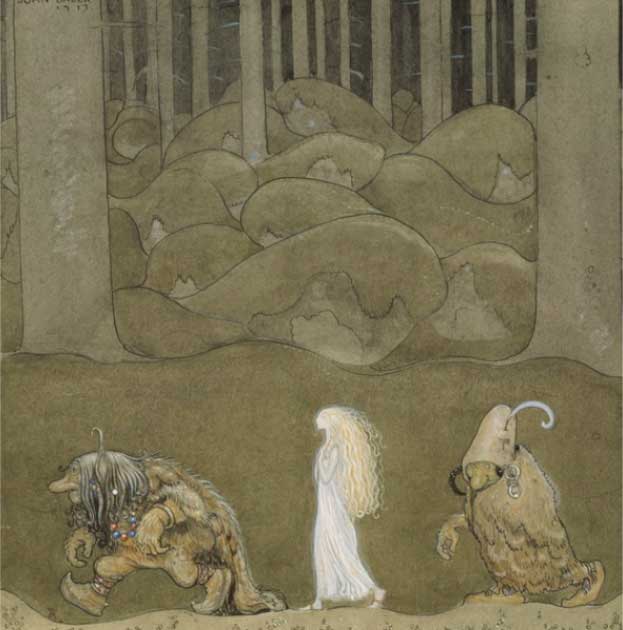JRR Tolkien was a master storyteller, famous for creating his very own fantasy world with such depth that entire franchises are built from the smallest passing suggestions in the mountain of notes and records he left when he died. His world is populated by both wonderful and terrible creatures, cross-country wizards and brave rangers who luckily turn out to be long-lost kings.
Much of what Tolkien wrote drew on existing tradition, of which this professor of Anglo Saxon was perhaps as well versed as anybody in the world. But, in searching for his principle “evil” race, it seems that Tolkien unexpectedly drew on his own creative reserves.
Commonly attributed as having been invented by Tolkien, orcs now appear in a wide range of modern fantasy books, films, and popular games. But were these terrible creatures solely a creation of the storyteller’s imagination? Or was he inspired by earlier mythology?
What are Tolkien’s Orcs?
Tolkien’s orcs are a race of humanoid monsters which were first mentioned in Tolkien’s The Hobbit before playing a much larger role in his The Lord of the Rings series. They are described as being human in shape but varying largely in size. Some orcs are much smaller, resembling traditional depictions of goblins, while others rivaled mortal men in stature.
Physically the orcs are described as ugly, filthy creatures with bowed legs and disproportionately long arms. They were described as being dark-skinned and bearing fangs. In Tolkien’s books, the orcs usually answer to a higher, malevolent power, evil sorcerers such as Sauron or the wizard Saruman. They form the bulk of the armies of evil, and are the main fighting force.

Tolkien’s orcs are described as evil creatures with a taste for human flesh. It is also suggested in The Two Towers by an orc called Grishnakh that orcs from Isengard are cannibals whereas other orcs are not. Whether he is telling the truth or just trying to frighten is unclear.
These orcs are a new invention in the The Lord of the Rings and are specifically said to be so, created by Saruman to move at speed in daylight. To follow the path from these creatures back to their genesis one must look to Tolkien’s original orcs, the underground race that fear daylight found in The Hobbit.
The Fictional Origin of Orcs
Tolkien had a hard time deciding on an origin story for his orcs. It has been posited that this was down to the author’s morals. On the one hand, he needed a competent enemy that his heroes would be able to slaughter en-masse without feeling guilt. On the other hand, Tolkien was a Catholic who wished to tell a moral story.
- Top Ten Mysterious Creatures Just Beyond Our Knowledge
- The Legendary Geats: What Happened to Beowulf’s People?
In Tolkien’s The Tale of Tinuviel, Orcs were created by Melkor (essentially Tolkien’s god of evil). In this version, they are evil puppets made by Melkor that are designed to carry out his evil whims. They have no real agency of their own and are incapable of making moral judgments.
In the Silmarillion however, Tolkien gave orcs a more tragic origin. There they were noble East Elves (Avari) who were captured, tortured, and bred by Morgoth (another name for Melkor) until they became the hateful twisted monsters that appear in The Lord of the Rings. This version of the orcs was able to procreate like elves and men, although the reader is never introduced to any female orcs.
Later on, Tolkien claimed in The Fall of Gondolin that orcs were sculpted by Morgoth from slime and given life through sorcery. He later contradicted himself by stating orcs were the result of elves being mated with either beasts or men. He also suggested orcs could be fallen Maiar (Tolkien’s analog of angels) or corrupted men.
As a Catholic Tolkien believed in the principle that “evil cannot make, only mock”. As such it appears his preferred origin for the orcs was one of corruption. Most of the origin stories revolve around creatures of light like the elves or Maiar being corrupted.
Certain orcs were given their own personalities and were capable of making their moral judgments. Despite orcs being portrayed as universally malevolent, at least one orc comments that elvish tactics are dishonorable. This implies that despite their evil nature orcs have their own beliefs of what is right and wrong.
The Orcs’ True Origin
Tolkien likely took the word orc from the Latin word Orcus. In Latin, Orcus was associated with the idea of devil spirits. The word then made its way into Anglo Saxon where it meant specter or goblin. In old Dutch, the word meant “devouring monster”.

In the Old English text Beowulf the word “Orcneas” is repeatedly used. While its exact meaning has been lost to time it is widely believed the term was used to refer to “evil” or “devil” spirits. As a professor of Anglo Saxon, Tolkien was very familiar with the text, and had even translated Beowulf himself.
It is also possible Tolkien took the name from more recent works, which may themselves share his sources. A monster called an Orcus appears in Edward Spencer’s 1590 tale, Faerie Queene. The word “orke” also appears in Samuel Holland’s 1656 fairy tale, Don Zara del Fogo. In this work, an orke is a creature similar to an ogre, another monstrous derivation of man.
From 1656 onwards variations of the word orke or ogre became increasingly common in English as fairy tales from Europe made their way across the channel. These ogres were usually large, hairy, tusked beasts that lived in forests or swamps and ate wandering humans.
- The Abhartach: The Irish Walking Dead and the Origin of Dracula?
- Queen Mab and Dreams: Shakespeare’s Inspiration or Another’s?
Orcs were even mentioned in two 19th-century Victorian texts, Charles Kinglsey’s The Water Babies and Hereward the Wake. It is believed Tolkien read these works of Kingsley’s as he borrows rare terms like “horse-boy” from these texts to use in his own.
Ultimately, most scholars believe that regarding his orcs Tolkien took little more inspiration than the name from these texts. The early texts refer to either malevolent spirits or types of ogres. Both of which are quite distinct from orcs. Instead, it seems that Tolkien took his inspiration from goblins.
Are Orcs and Goblins the Same Thing?
In traditional European folklore, goblins were a kind of fairy. Their depictions vary greatly but they were usually described as small ugly humanoid creatures. Rather than being outright evil, they were usually shown to be malevolent or tricky.

They were often shown to live underground and shun the light. In many tales, they are shown playing tricks on humans, rather than trying to eat them. So far these sound a lot like Tolkien’s original, underground orcs.
It is this European folklore that Tolkien seems to have taken and expanded on. Tolkien chose to ditch the fairy element and create his own origin story for the orcs. He also decided to make the orcs decidedly more malevolent than most European depictions of goblins.
There has been much confusion over the years as to whether Tolkien meant for goblins and orcs to be the same thing. In The Hobbit, only goblins are mentioned, while in The Lord of the Rings he predominantly mentions orcs. This confusion is easy to clear up, however.
Tolkien went on record to state that the terms goblin and orcs are interchangeable. He claimed that in The Hobbit he chose to use the English term for the creature while in the The Lord of the Rings the word orc is the local term used by the characters themselves. He introduced the new, larger orcs when it became clear that traditional goblins/orcs did not pose enough of a threat.
The orcs are a great example of Tolkien’s power as a storyteller. He was gifted in taking elements of European folklore and fantasy and weaving them into his amazing narrative. Many of his creations have gone on to inspire modern works of fiction to this day. The term orc has become synonymous with the very idea of fantasy storytelling.
At the same time, the orcs are a reminder that Tolkien was not perfect. Even in a world as masterfully and thoroughly created as his there are holes, Tolkien clearly had no idea how his orcs originated. But we do, from one place: his imagination. An imagination that has gone on (and will continue to) inspire writers for generations to come.
Top Image: Tolkien’s orcs have often been imitated, but where did the author draw from in creating them? Source: Warpedgalerie / Adobe Stock.